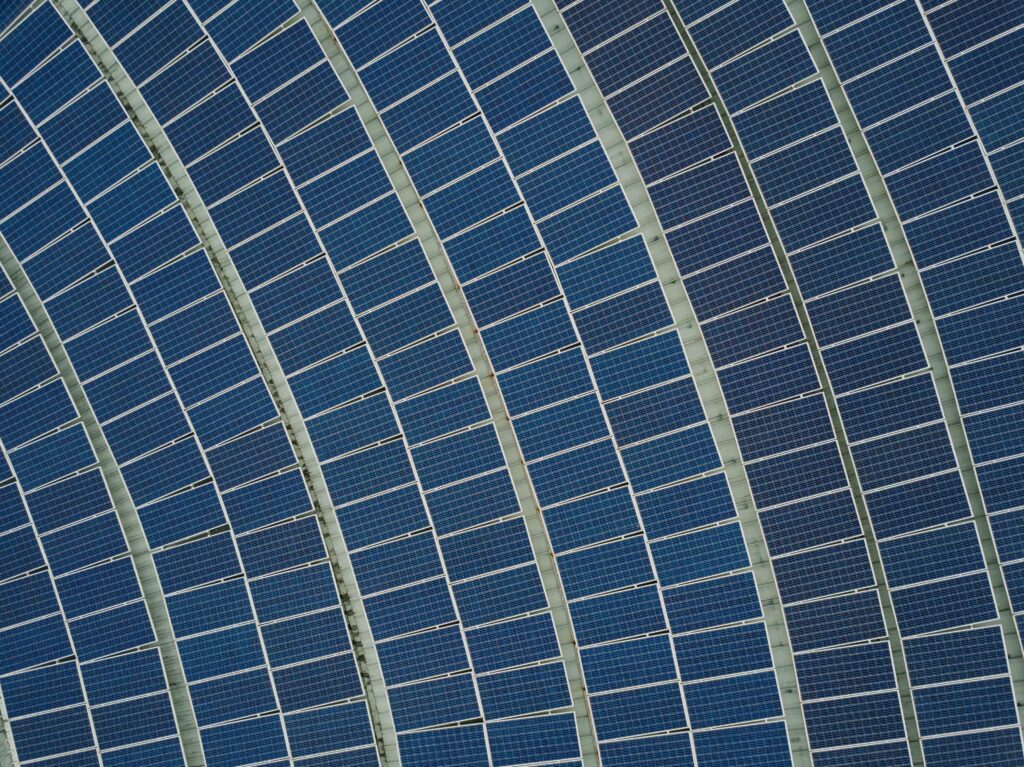Solar generators are a popular and environmentally friendly alternative for generating electricity. However, a lingering concern among many is whether these generators pose a risk of carbon monoxide emissions. In this article, we will explore the science behind solar generators and their potential impact on carbon monoxide levels. By understanding the factors at play, you can make an informed decision about the safety and efficacy of using solar generators in your everyday life.
Understanding Solar Generators
Concept of Solar Generators
Solar generators are devices that harness the power of the sun to generate electricity. They are an environmentally-friendly and sustainable alternative to conventional generators, which rely on fossil fuels to produce energy. Solar generators utilize solar panels to convert sunlight into electrical energy, which can then be used to power various appliances and devices.
How Solar Generators Work
Solar generators operate on the principle of photovoltaics, where sunlight is converted directly into electricity. The main components of a solar generator include solar panels, photovoltaic cells, inverters, batteries, and a charge controller.
Components of Solar Generators
Solar panels
Solar panels are the most recognizable component of a solar generator. They are composed of multiple photovoltaic cells, which are responsible for converting sunlight into electricity. The size and number of solar panels determine the overall power output of the solar generator.
Photovoltaic cells
Photovoltaic cells are the heart of the solar panels. They contain semiconductors, typically made of silicon, which can absorb photons from sunlight. When sunlight hits the cells, the photons interact with the semiconductors, causing electrons to be released, creating an electric current.
Inverters
inverters play a crucial role in a solar generator by converting the direct current (DC) electricity generated by the solar panels into alternating current (AC) electricity, which is the type of power used in most household appliances and devices.
Batteries
batteries are an essential component of a solar generator as they store the energy produced by the solar panels. They allow for a continuous power supply even when sunlight is not available, such as during nighttime or cloudy days. Batteries enable solar generators to be used as a reliable source of electricity.
Charge controller
The charge controller regulates the flow of electricity between the solar panels and the batteries. It prevents overcharging or damage to the batteries by monitoring and controlling the charging process. The charge controller also ensures that the batteries are properly maintained and optimized for long-term use.

Exploration of Carbon Monoxide
What is Carbon Monoxide
Carbon monoxide (CO) is a colorless, odorless, and tasteless gas that is highly toxic to humans and animals when inhaled in high concentrations. It is produced as a byproduct of incomplete combustion of fossil fuels such as gasoline, coal, and natural gas.
Factors Contributing to Carbon Monoxide Production
Several factors contribute to the production of carbon monoxide, including the type of fuel, combustion efficiency, and operating conditions. Inadequate ventilation, poorly maintained equipment, and improper fuel combustion can increase the production of carbon monoxide.
Carbon Monoxide Emission from Conventional Generators
Operation of Conventional Generators
Conventional generators, which rely on fossil fuels, such as gasoline or diesel, to produce electricity, operate by burning the fuel to drive a mechanical generator. The combustion of these fuels releases carbon monoxide as a byproduct.
Link Between Conventional Generators and Carbon Monoxide Production
The combustion of fossil fuels in conventional generators produces carbon monoxide as a result of incomplete combustion. This poses significant health risks, as carbon monoxide is a silent killer that can cause poisoning and even death when inhaled in high concentrations.

Does Solar Energy Production Emit Carbon Monoxide?
Understanding the Energy Production Process of a Solar Generator
Solar generators harness the energy from the sun through the photovoltaic cells in the solar panels. The conversion of sunlight into electricity in solar generators does not involve any combustion process. Therefore, solar energy production does not emit carbon monoxide.
Presence of Carbon Monoxide in this process
Since solar energy production does not involve combustion or the use of fossil fuels, there is no carbon monoxide emission associated with the operation of solar generators. Solar energy is a clean and renewable source of electricity, making solar generators an excellent choice for reducing carbon emissions and promoting environmental sustainability.
Comparing Solar Generators and Conventional Generators: Carbon Monoxide Emission
Emission Rate Difference Between the Two
Solar generators have zero carbon monoxide emissions, as they operate without combustion or burning of any fuel. Conventional generators, on the other hand, emit significant amounts of carbon monoxide, posing health and environmental risks.
Health and Environmental Implications
Carbon monoxide emitted by conventional generators can have severe health impacts, including headaches, dizziness, nausea, and even death in extreme cases. Additionally, carbon monoxide is a potent greenhouse gas that contributes to climate change. By using solar generators instead of conventional generators, we can significantly reduce carbon monoxide emissions and mitigate these health and environmental risks.

Dispelling Common Myths About Solar Generators and Carbon Monoxide
Popular Misconceptions
There are several misconceptions surrounding solar generators and carbon monoxide. Some believe that solar generators emit carbon monoxide, while others question their efficiency and reliability compared to conventional generators.
Clarifications and Facts
It is important to dispel these misconceptions and provide accurate information. Solar generators do not emit carbon monoxide during their operation, as they rely solely on sunlight for energy production. They are highly efficient and reliable, especially when properly sized and maintained. Solar generators offer a cleaner and safer alternative to conventional generators, reducing reliance on fossil fuels and minimizing environmental impact.
Safety Guidelines when using Solar Generators
Proper Installation
To ensure safe operation, it is crucial to follow proper installation guidelines for solar generators. This includes correctly mounting the solar panels, wiring the components, grounding the system, and complying with local electrical and building codes. It is recommended to hire a professional for installation to ensure safety and optimal performance.
Monitoring and Maintenance
Regular monitoring and maintenance are essential for the safe and efficient operation of solar generators. This includes inspecting solar panels for damage, checking battery levels, cleaning debris from the panels, and ensuring proper electrical connections. Following the manufacturer’s guidelines and scheduling professional inspections can help identify and address any issues promptly.
Emergency Precautions
In case of emergencies, such as natural disasters or power outages, it is essential to have a plan in place. Solar generators can provide a reliable source of backup power, but it is important to have safety measures in place. This includes proper storage of fuel (if applicable), having fire extinguishers readily available, and following emergency protocols. It is also recommended to have a backup power system in case of prolonged periods without sunlight.
Impacts of Solar Generators on Environment
Carbon Footprint
Solar generators have a significantly lower carbon footprint compared to conventional generators. As solar energy production does not emit carbon monoxide or other greenhouse gases, it helps reduce the overall carbon emissions and combat climate change. By transitioning to solar generators, we can contribute to a cleaner and more sustainable environment.
Solar Waste Management
The production and disposal of solar panels do have an impact on the environment. However, advancements in solar panel recycling and sustainable manufacturing processes have minimized this impact. Proper disposal and recycling of solar panels at the end of their lifespan are crucial to ensure minimal waste and maximum environmental benefits.
Promoting Sustainable Energy: The Role of Solar Generators
Benefits of Solar Energy
Solar energy and solar generators offer numerous benefits. They provide a clean and renewable source of electricity, reduce carbon emissions, and contribute to a more sustainable future. Solar energy is abundant, free, and accessible in most regions, making it a viable option for energy production.
Challenges and Solutions in Solar Energy Adoption
While solar energy adoption is growing rapidly, there are still challenges to overcome. initial installation costs, limited storage capacity, and intermittent availability of sunlight are some of the challenges faced in widespread adoption of solar generators. However, advancements in technology, government incentives, and increasing awareness are all helping to address these challenges and promote solar energy adoption.
Future Perspectives in Solar Energy
The future of solar energy looks promising. Continued research and development are driving advancements in solar panel efficiency, storage capacity, and affordability. Integration of solar energy with smart grid systems and the development of innovative storage solutions will further enhance the viability and effectiveness of solar generators. Increased investment and collaboration between governments, industries, and individuals will play a crucial role in accelerating the transition to a sustainable solar-powered future.
In conclusion, solar generators are a clean and sustainable alternative to conventional generators. They operate without emitting carbon monoxide, making them safer for both human health and the environment. Solar energy production does not involve combustion, thus eliminating the production of carbon monoxide. By understanding the components, benefits, and safety guidelines of solar generators, we can harness the power of the sun and contribute to a more sustainable future.




